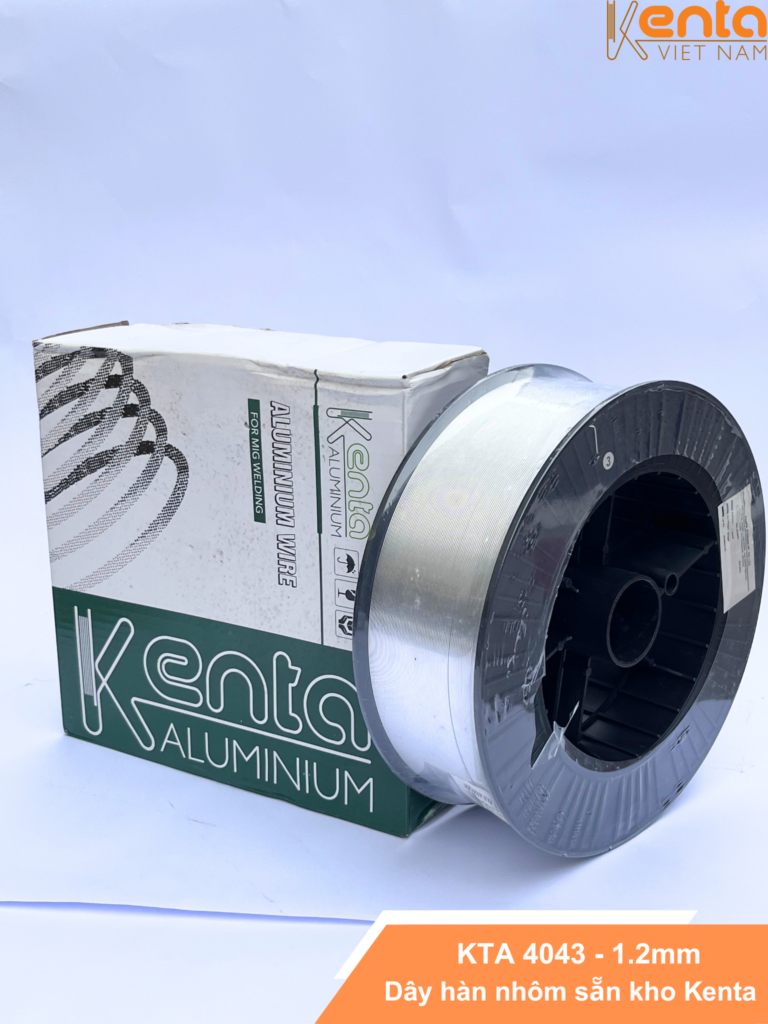Knowledge, Technology
5 Effective Ways to Store Aluminum Welding Materials to Ensure Welding Quality
In the fields of mechanical engineering, construction, and industrial manufacturing, aluminum welding materials are indispensable for welding aluminum and aluminum alloy parts. However, not everyone knows how to properly store aluminum welding rods to ensure the quality of the weld and the durability of the product. If not stored correctly, welding rods can easily become damp, oxidized, or denatured, affecting their performance.
Let Kenta VietNam explore 5 effective and easy ways to store aluminum welding materials, helping you maintain the quality of welding rods for a long time and save costs during use.

1. Store aluminum welding materials materials in sealed, moisture-proof packaging.
One of the biggest damaging factors for aluminum welding materials is moisture in the air. Aluminum is highly reactive and easily oxidizes when exposed to humid air. Therefore, keeping welding rods dry is extremely important.
How to do it:
- After opening the original packaging, you should store the remaining portion in a vacuum-sealed bag or a sturdy zip-lock bag.
- You can also use desiccant packets or silica gel to maintain a dry environment.
- If a vacuum bag is not available, you can place the welding rods in a PVC pipe with a tight-fitting cap.
Note: Do not expose aluminum welding rods to the air for too long, especially in high-humidity areas such as near bathrooms, kitchens, or outdoors.
2. Store in a specialized cabinet or box.
To enhance storage effectiveness and limit the impact of the external environment, you should invest in a specialized cabinet or box for storing aluminum welding materialsThis is an ideal solution for workshops or individuals who frequently use welding rods.
How to do it:
- Use a sealed metal cabinet equipped with a dehumidifier or filtered ventilation holes.
- For portable storage boxes, choose ones that are waterproof and have a shock-absorbing lining inside.
- Always keep the box/cabinet in a dry, cool place, away from heat sources or direct sunlight.
3. Do not store with other types of welding materials.
Each type of welding rod has different compositions and storage requirements. If you mix aluminum welding materials with iron welding materials, stainless steel, or flux-coated welding rods, it can easily lead to cross-contamination, affecting the welding quality.

How to do it:
- Clearly classify each type of welding rod by label or technical code.
- Label the product name, opening date, and remaining quantity for easy tracking.
- Each type of welding rod should have its own box or separate compartment.
4. Do not handle aluminum welding materials
Many people have a habit of directly holding aluminum welding rods with their bare hands without using gloves or tongs. However, this can cause hand sweat – which contains salt and moisture – to oxidize the surface of the welding rod, affecting the quality of the weld.

How to do it:
- When taking out welding rods for use, wear dry gloves or use specialized tongs.
- Absolutely do not handle welding rods after washing your hands or if your hands are wet.
- If you accidentally handle them with bare hands, clean the welding rod with a clean, dry cloth before welding.
5. Periodically dry aluminum welding materials if stored for a long time.
If you need to store aluminum welding materials for an extended period, periodic drying is essential. This is a simple but effective way to remove accumulated moisture in the welding rods, especially in areas with humid climates.
How to do it:
- Use a specialized welding rod oven, set the temperature to 100–120°C for 1–2 hours.
- If an oven is not available, you can use an industrial dryer with precise temperature control.
- After drying, let the welding rods cool naturally in a sealed environment before repacking.
Note: Do not dry welding rods at excessively high temperatures as it may alter the outer layer of the welding rod.
Conclusion
Proper storage of aluminum welding materials not only extends the lifespan of the welding rods but also ensures weld quality, minimizing risks during construction. Whether you are a large workshop or an individual working at home, you can flexibly, economically, and effectively apply the methods above.
Invest properly in storage to ensure aluminum welding materials are always ready to perform when needed – because a strong weld starts with careful preparation!




















